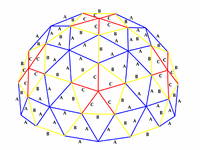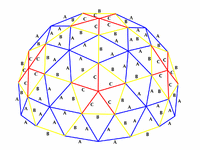Hello,
I am a total layman when it comes to math or geometry.
I was just wandering if someone out there could verify my question.
I am searching for pictures of a 5th dimensional orb or dome (of course I tried google images but I'm not quite sure these are depictions of what a 5 dimensional orb or dome looks like)
I'd be very grateful if someone could tell me if these pictures are 5th dimensional or not.
If you have a picture of a 5th dimensional dome, please share it with me.
Thanks

I am a total layman when it comes to math or geometry.
I was just wandering if someone out there could verify my question.
I am searching for pictures of a 5th dimensional orb or dome (of course I tried google images but I'm not quite sure these are depictions of what a 5 dimensional orb or dome looks like)
I'd be very grateful if someone could tell me if these pictures are 5th dimensional or not.
If you have a picture of a 5th dimensional dome, please share it with me.
Thanks


